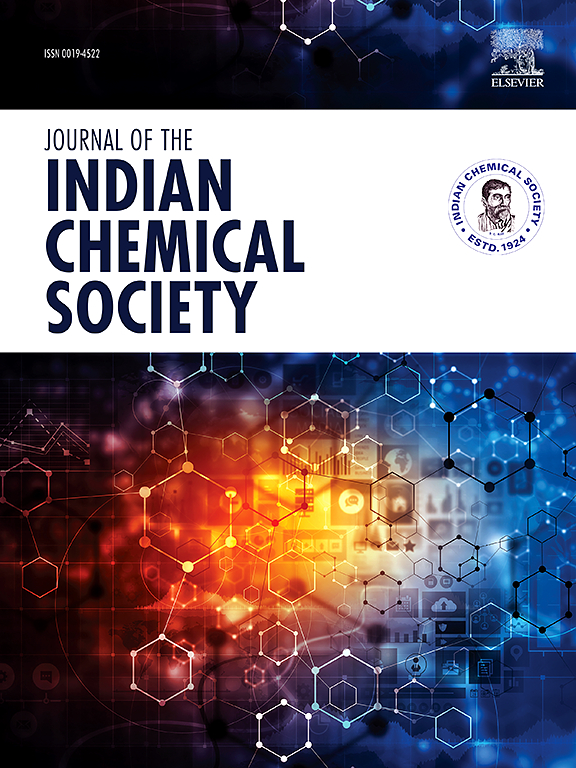Ni/Al2O3催化剂催化甲烷CO2重整制合成气:磁场对催化剂合成的影响
IF 3.4
4区 化学
Q2 CHEMISTRY, MULTIDISCIPLINARY
引用次数: 0
摘要
本文研究了磁性水浸渍法对负载在氧化铝上的镍活性相催化剂尺寸变化的影响。采用非磁化水和磁化水制备了两种Ni/Al2O3催化剂。结果表明,暴露在磁场中会导致水的表面张力降低,同时导致其粘度增加。溶剂性质的变化导致毛细作用和液体向孔内输送的减少。采用BET、XRD、TPR和TEM等方法研究了样品的结构性能、还原模式和粒度分布。实验结果表明,水溶剂的磁化强度对镍的活性尺寸有影响,处理过的催化剂的还原活化能降低,这是由于Ni与载体之间的相互作用减少。甲烷CO2重整的催化性能证实了CO2和甲烷反应物转化率的降低和催化剂失活。对两种催化剂在甲烷干重整中的失活动力学进行了评价。沉积在Ni/A上的碳含量约为1.3 μmol C.gcat−1。min−1,高于磁化Ni/Am催化剂(1.0 μmol C.gcat−1.min−1)。本文章由计算机程序翻译,如有差异,请以英文原文为准。

CO2 reforming of CH4 to syngas by Ni/Al2O3 catalyst: Effect of magnetic field on catalyst synthesis
Here, we investigated the impact of changes in the dimensions of the nickel active phase catalyst supported on alumina through the novel impregnation procedure by applying magnetic water. Two Ni/Al2O3 catalysts have been prepared by using non-magnetized and magnetized water. The outcomes revealed that exposure to a magnetic field leads to a reduction in the surface tension of water while simultaneously causing an increase in its viscosity. The induced changes in the solvent properties cause a decrease in the capillary action and the liquid transport into the pores. The structural properties, reduction pattern, and particle size distribution of the obtained samples are studied by using BET, XRD, TPR, and TEM methods. The experimental outcomes indicated that the dimension of the nickel active size is affected by the magnetization of the water solvent, and the activation energy of the reduction is decreased for the treated catalyst, due to less interaction between Ni and the support. The catalytic performance in the CO2 reforming of methane confirms a decrease in both conversions of the CO2 and methane reactants and the catalyst deactivation. The deactivation kinetics were evaluated for both catalysts in the dry reforming of methane. The carbon deposited on the Ni/A has been obtained at about 1.3 μmol C.gcat−1.min−1, which is higher than what is for the magnetized Ni/Am catalyst (1.0 μmol C.gcat−1.min−1).
求助全文
通过发布文献求助,成功后即可免费获取论文全文。
去求助
来源期刊
CiteScore
3.50
自引率
7.70%
发文量
492
审稿时长
3-8 weeks
期刊介绍:
The Journal of the Indian Chemical Society publishes original, fundamental, theorical, experimental research work of highest quality in all areas of chemistry, biochemistry, medicinal chemistry, electrochemistry, agrochemistry, chemical engineering and technology, food chemistry, environmental chemistry, etc.

 求助内容:
求助内容: 应助结果提醒方式:
应助结果提醒方式:


